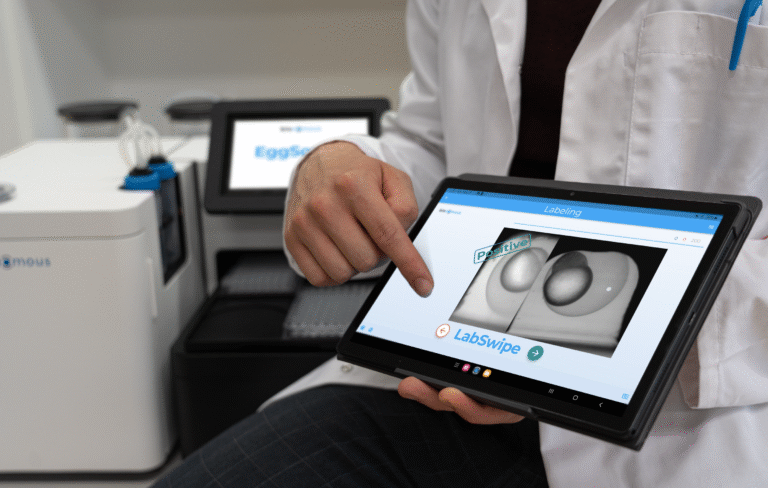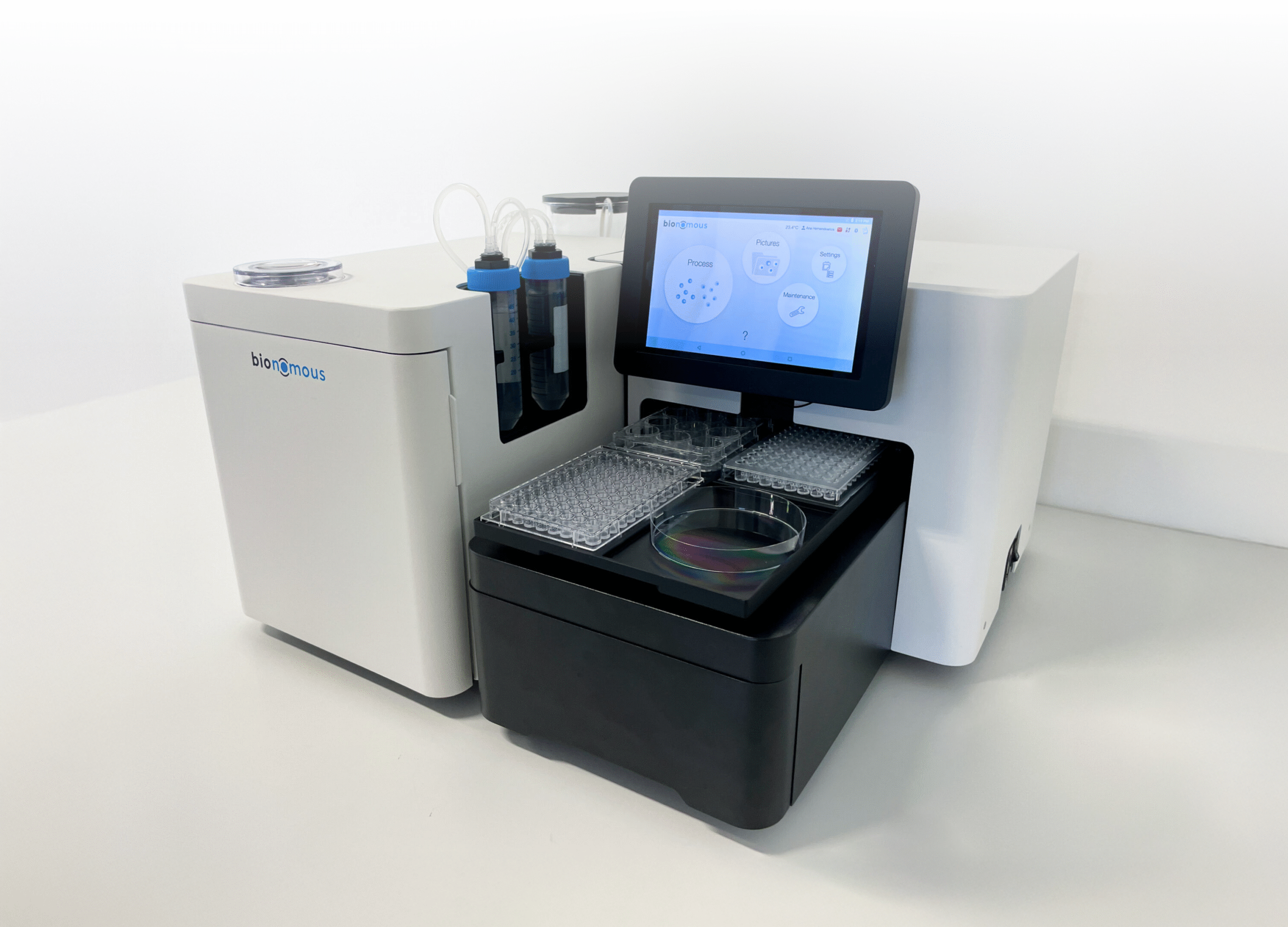Customize your
sorting, standardize your results
LabSwipe lets you create tailored algorithms for the EggSorter. Achieve consistency, reproducibility, and full control over your data—no technical expertise required.

Create tailored algorithms for your sorting criteria
Create custom sorting algorithms to enhance your workflows, manage your data, and ensure consistent, reproducible results across projects.
Standardize your experiments
Classify images based on developmental stages, species, and more—ensuring a standardized sorting method and metrics for every project.
No expertise required
Label data and train algorithms quickly without any prior technical expertise, speeding up your workflow and reducing setup time.
Full data ownership
Keep your images and data private. Processing happens locally, so your intellectual property remains fully under your control.
Labeling and Training, all in one.
Intuitive labeling for precise classification
Train AI models for your research needs
Discover AI efficiency with the EggSorter
The EggSorter automates the screening, sorting, and plating of small biological entities (0.5-2mm) like fish embryos, plant seeds, 3D cell cultures, and more.
80% time release
Get back hours spent on sorting—the EggSorter handles it for you.
95-99% accuracy
Standardize the sorting process and generate robust data reports.
Fully automated process
Perform high-impact work while the EggSorter runs in the background.

Discover use cases for LabSwipe
Automated sorting for zebrafish embryos
LabSwipe enables the EggSorter to identify zebrafish embryos at 6 hpf (hours post-fertilization) with 95% accuracy—standardizing the process and ensuring only the right embryos are selected for disinfection.
Zebrafish embryo at the ‘shield’ stage (~6 hpf), classified as good.
Zebrafish embryo at a different stage, classified as bad.
Killifish embryo selection made simple
A LabSwipe-trained algorithm detects killifish embryos at the ‘black eyes’ stage with 93% accuracy, automating selection for transfer and improving husbandry efficiency.
Killfish embryo at the ‘black eyes’ stage, classified as good.
Killfish embryo at a stage different from the the ‘black eyes stage’ classified as bad.
Optimized sorting for sea bream embryos
LabSwipe helps the EggSorter classify sea bream embryos, distinguishing viable early-stage embryos from dead or later-stage embryos with 97% accuracy, enhancing aquaculture workflows.
Sea bream embryo at an early stage of development, classified as good.
Dead sea bream embryo at a later stage of development, classified as bad.
Fluorescence-based seed sorting
A LabSwipe algorithm distinguishes germinated flower seeds with GFP expression from non-germinated ones, achieving 93% accuracy for precise, automated selection.
Germinated flower seed. Left: in fluorescence (GFP expression). Right: in brightfield
Non-germinated flower seed. Left: in fluorescence (no GFP expression). Right: in brightfield.
Hear about our impact in labs like yours

At the Leibniz Institute on Aging – Fritz Lipmann Institute (FLI), we are using the EggSorter for sorting Nothobranchius furzeri wild type eggs onto plates containing coconut substrate. The EggSorter has proven to be a highly reliable and efficient tool in our workflow, significantly streamlining the egg-sorting process.
We are very satisfied with its performance. The system operates with very high precision and consistency, helping us to save time and standardize a previously labor-intensive step. The EggSorter fully meets our expectations and has become an indispensable part of our daily work with N. furzeri embryos

Our goal was to robotize the sorting of the fish eggs to improve our productivity. We acknowledge the perseverance of Bionomous to solve technical difficulties and successfully deliver the tool adapted to our specific needs. The eggsorter dedicated to Medaka fish eggs facilitates the work of our technicians.

The Bionomous EggSorter saves me valuable time in the laboratory while ensuring accurate and reliable results.
Thanks to its automation, I can focus on my experiments/other tasks without worrying about repetitive sorting tasks.